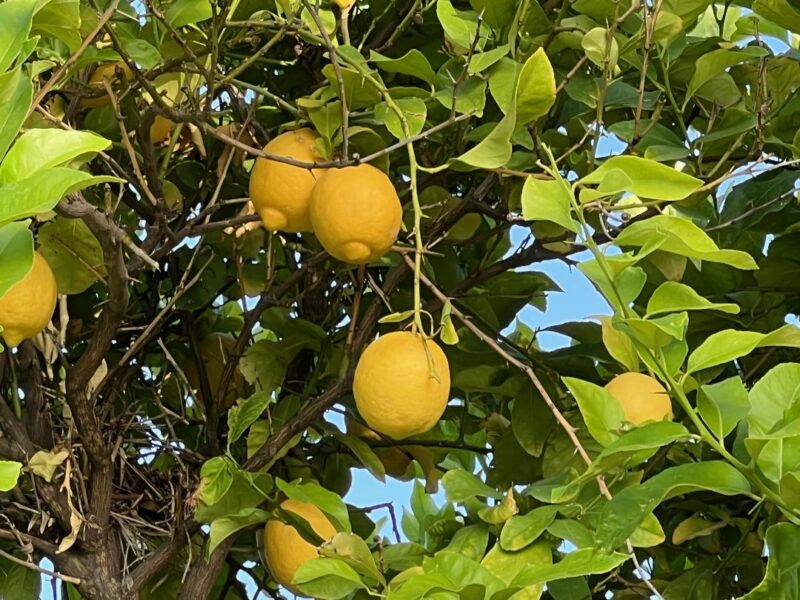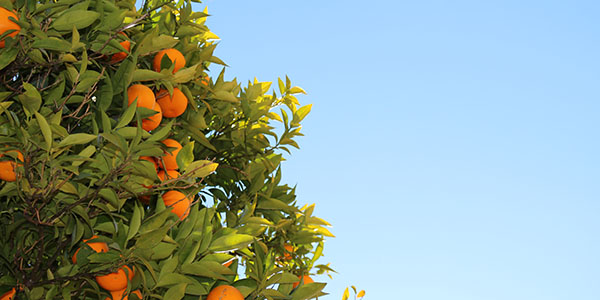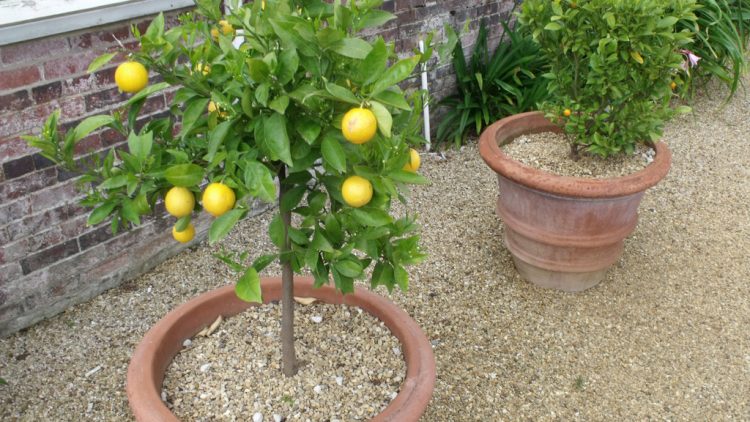To grow citrus in Arizona, choose a sunny location and ensure well-draining soil. Water deeply but infrequently.
Arizona’s climate is ideal for citrus trees, thanks to its warm temperatures and abundant sunshine. Citrus varieties like oranges, lemons, and grapefruits thrive here. The key to success is selecting a sunny spot with well-draining soil. Watering is crucial; deep, infrequent watering encourages strong root growth.
Mulching helps retain soil moisture and regulate temperature. Protect young trees from frost during colder months. Fertilize regularly with a balanced citrus fertilizer. Pruning maintains tree health and encourages fruit production. With proper care, your citrus trees will flourish and provide a bountiful harvest. Enjoy the fresh, homegrown citrus fruits right from your backyard in Arizona.
Choosing The Right Citrus Varieties
Choosing the right citrus varieties is essential for successful growth in Arizona. The right variety ensures better yield and fewer problems. This guide helps you pick the best citrus for Arizona.
Best Types For Arizona Climate
Arizona’s climate is perfect for certain citrus types. Here are the best options:
| Type | Varieties | Benefits |
|---|---|---|
| Oranges | Valencia, Navel | Juicy, sweet, good for fresh eating |
| Lemons | Eureka, Lisbon | High yield, great for juice |
| Grapefruits | Red, White | Sweet, good for breakfast |
| Limes | Key Lime, Persian Lime | Perfect for drinks and cooking |
Dwarf Vs. Standard Trees
Citrus trees come in two main sizes: dwarf and standard. Each has its benefits.
Dwarf Trees
- Smaller size, ideal for patios
- Easier to manage and harvest
- Perfect for containers
Standard Trees
- Full size, larger yield
- Better for large yards
- Longer lifespan
Choosing the right tree size depends on your space and needs. Dwarf trees suit small spaces. Standard trees are best for large areas.

Credit: www.elginnursery.com
Preparing The Soil
Growing citrus in Arizona can be rewarding. But it starts with preparing the soil. Healthy soil ensures your trees thrive. Let’s look at the steps needed for perfect soil preparation.
Soil Testing And Amendments
Before planting, perform a soil test. This helps you understand the soil’s needs.
- Collect soil samples from different garden spots.
- Send these samples to a local lab for testing.
- Get a detailed report on soil composition and nutrients.
Based on the report, you may need to add amendments:
- Organic compost: Improves soil texture and adds nutrients.
- Gypsum: Helps break down clay soil.
- Sand: Enhances drainage in dense soils.
Ideal Soil Ph Levels
Citrus trees need a specific soil pH to grow well. The ideal pH range is between 6.0 and 7.0.
If your soil pH is off, adjust it:
| pH Level | Amendment |
|---|---|
| Below 6.0 | Add lime to raise pH. |
| Above 7.0 | Add sulfur to lower pH. |
Regularly monitor your soil pH. This ensures it stays within the ideal range.
Planting Your Citrus Trees
Planting citrus trees in Arizona can be rewarding. The unique climate provides ideal conditions for citrus growth. Proper planting ensures your trees thrive and produce juicy fruits. This section covers essential steps for planting your citrus trees.
When To Plant
In Arizona, the best time to plant citrus trees is in the early spring. Planting in March allows trees to establish roots before the intense summer heat. Avoid planting in the summer as young trees struggle in extreme heat.
Proper Spacing And Depth
Proper spacing and depth are crucial for citrus tree health. Space each tree 12-15 feet apart to ensure ample sunlight and air circulation. Crowded trees are prone to diseases and poor fruit production.
| Tree Type | Spacing (feet) | Planting Depth (inches) |
|---|---|---|
| Orange | 15 | 24 |
| Lemon | 12 | 18 |
| Grapefruit | 20 | 24 |
When planting, dig a hole twice as wide as the root ball. Ensure the hole is deep enough to cover the roots without burying the trunk. Gently place the tree in the hole and fill it with soil. Water the tree thoroughly after planting.
- Plant in early spring
- Space trees 12-15 feet apart
- Dig a hole twice as wide as the root ball
- Cover the roots without burying the trunk
- Water thoroughly after planting

Credit: www.arizonaorangeco.com
Watering Techniques
Growing citrus in Arizona can be a rewarding experience. The key to success lies in proper watering techniques. Citrus trees need careful attention to hydration, especially in a hot climate like Arizona. Let’s explore the best practices for watering your citrus trees.
Drip Irrigation Systems
Drip irrigation systems are efficient for watering citrus trees. They deliver water directly to the root zone, minimizing waste. This method saves water and ensures the roots get enough moisture. Here’s how you can set up a drip irrigation system:
- Install a mainline from your water source.
- Attach emitters to the mainline near each tree.
- Set a timer for regular watering intervals.
Using a drip system helps maintain consistent soil moisture. This reduces the risk of over or under-watering your trees.
Watering Frequency
Determining the right watering frequency is crucial. Citrus trees have different needs depending on their age and the season.
| Tree Age | Watering Frequency |
|---|---|
| Newly Planted | Every 3-5 days |
| 1-2 Years Old | Every 7-10 days |
| Mature Trees | Every 10-14 days |
During summer, you may need to water more frequently. In winter, reduce the frequency as the trees need less water.
Follow these techniques to ensure your citrus trees thrive in Arizona’s climate. Proper watering keeps your trees healthy and productive.
Fertilizing For Growth
Fertilizing citrus trees in Arizona is essential for healthy growth. These trees need specific nutrients to thrive in the desert climate. Proper fertilization ensures vibrant fruit and robust foliage. Learn how to choose the best fertilizers and apply them effectively to your citrus trees.
Best Fertilizers
Choosing the right fertilizer is crucial. Citrus trees need a balanced mix of nitrogen, phosphorus, and potassium. Look for fertilizers labeled NPK 6-4-6 or 8-8-8. Organic options like compost and manure are also beneficial.
| Fertilizer Type | Nutrient Ratio (N-P-K) | Benefits |
|---|---|---|
| Synthetic Granular | 6-4-6 | Quick nutrient release |
| Organic Compost | Varies | Improves soil health |
| Liquid Fertilizer | 5-5-5 | Easy to apply |
Application Schedule
Fertilize citrus trees three times a year. Apply in February, May, and September. Follow this schedule to ensure consistent growth and fruit production.
- February: Early spring application promotes new growth.
- May: Mid-spring feeding supports fruit development.
- September: Fall application prepares trees for winter.
Use the recommended amount of fertilizer. Over-fertilizing can harm your trees. Always water the trees after fertilizing. This helps the nutrients reach the roots effectively.
Pruning And Maintenance
Growing healthy citrus in Arizona requires regular pruning and maintenance. Pruning helps trees grow better and produce more fruit. Maintenance keeps the trees free of pests and diseases. Let’s look at the best methods for pruning and maintaining your citrus trees.
Pruning Techniques
Proper pruning is crucial for your citrus trees. It helps shape the tree and remove dead branches. Here are the key steps:
- Remove Dead Wood: Cut away any dead or diseased branches.
- Thin the Canopy: Remove some branches inside the tree for better airflow.
- Shape the Tree: Trim the tree to keep it balanced and strong.
Pruning should be done in late winter or early spring. Use clean, sharp tools to avoid damaging the tree.
Pest And Disease Control
Pests and diseases can harm your citrus trees. Regular maintenance can prevent these problems. Here’s how to protect your trees:
- Inspect Regularly: Check your trees often for signs of pests.
- Use Natural Predators: Introduce ladybugs to eat harmful insects.
- Apply Organic Sprays: Use neem oil or insecticidal soap.
Keep the area around your trees clean. Remove fallen leaves and fruit to prevent diseases.
Here’s a table of common pests and solutions:
| Pest | Solution |
|---|---|
| Aphids | Neem oil or ladybugs |
| Spider Mites | Insecticidal soap |
| Scale Insects | Prune affected branches |
By following these steps, your citrus trees will stay healthy and productive.
Protecting From Extreme Weather
Arizona’s climate poses unique challenges for growing citrus. Extreme weather conditions can harm your citrus trees. Proper protection methods are essential. Learn how to safeguard your citrus trees from frost and heat stress below.
Frost Protection
Frost can damage citrus trees, especially during the winter. Use these methods to protect your trees:
- Cover your trees with blankets or frost cloths.
- Water the soil around your trees before a frost. Moist soil retains heat better.
- Use outdoor lights to provide warmth. Place them under the covers.
| Frost Protection Method | Effectiveness |
|---|---|
| Blankets or Frost Cloths | High |
| Watering Soil | Medium |
| Outdoor Lights | Medium |
Heat Stress Management
High temperatures can also stress citrus trees. Use these tips to keep your trees cool:
- Water your trees deeply and regularly.
- Apply mulch around the base of the trees. Mulch helps retain moisture.
- Create shade using shade cloths or structures.
- Install drip irrigation for consistent watering.
- Check soil moisture levels frequently.
- Consider using reflective mulch to reduce heat.
By following these methods, your citrus trees will thrive even in extreme weather. Proper care ensures healthy and productive trees in Arizona’s climate.
Harvesting Your Citrus
Harvesting your citrus in Arizona can be a rewarding experience. Knowing the right time and method to pick your fruit is crucial. This ensures you get the best flavor and quality from your trees.
Signs Of Ripeness
To determine if your citrus is ripe, check these signs:
- Color: The fruit should have a vibrant, uniform color.
- Texture: The skin should be slightly soft to the touch.
- Smell: A ripe fruit will have a strong, pleasant citrus aroma.
Gently squeeze the fruit. It should give a little under pressure. Taste a sample to ensure the sweetness and juiciness are just right.
Proper Picking Methods
Follow these steps to pick your citrus correctly:
- Use the right tools: A sharp pair of pruning shears works best.
- Cut the fruit: Snip the stem close to the fruit. This prevents damage.
- Handle with care: Place the fruit gently in a basket or box.
Avoid pulling the fruit directly from the tree. This can cause damage to the fruit and the tree. Always use gentle pressure and cutting tools for the best results.
Here is a quick reference table for harvesting common citrus varieties in Arizona:
| Citrus Variety | Best Harvest Time |
|---|---|
| Oranges | December to April |
| Lemons | Year-round |
| Grapefruits | December to May |
| Limes | May to September |
Enjoy the fruits of your labor and share with friends and family. Harvesting citrus correctly ensures you get the best taste and quality from your trees.

Credit: phoenixtrimatree.com
Frequently Asked Questions
How Much Water Do Citrus Trees Need In Arizona?
Citrus trees in Arizona need deep watering every 7-10 days. Ensure soil is moist but not waterlogged. Adjust frequency based on weather conditions.
What Type Of Soil Is Best For Citrus?
Citrus trees thrive in well-drained, sandy loam soil. Ensure soil pH is between 6. 0 and 7. 0. Adding organic matter improves soil quality.
When Is The Best Time To Plant Citrus?
The best time to plant citrus in Arizona is early spring. This allows trees to establish before extreme summer heat. Late fall is also suitable.
How Do I Protect Citrus From Frost?
Cover citrus trees with frost cloth or blankets during cold nights. Use stakes to avoid touching foliage. Water soil before freezing temperatures.
Conclusion
Growing citrus in Arizona is both rewarding and manageable. Follow the right steps for soil, watering, and sunlight. Enjoy fresh, homegrown fruits by nurturing your citrus trees. With a bit of care, your garden can flourish even in the desert climate.
Happy gardening and enjoy your citrus harvest!
